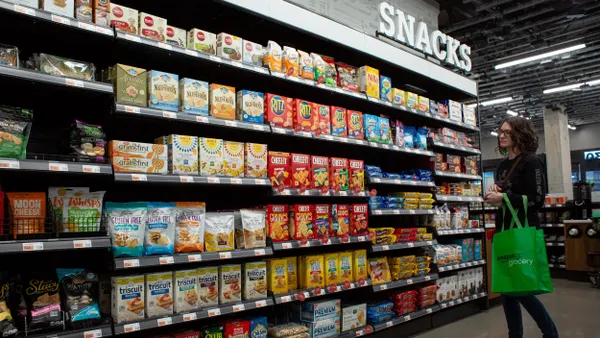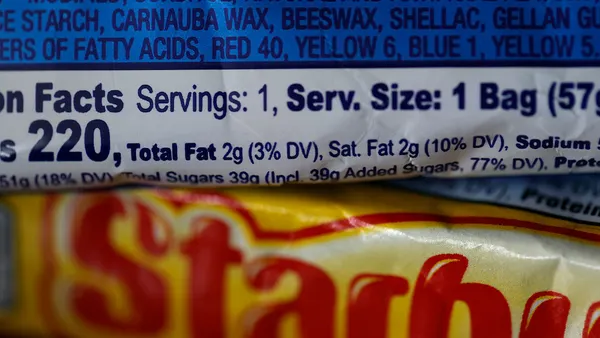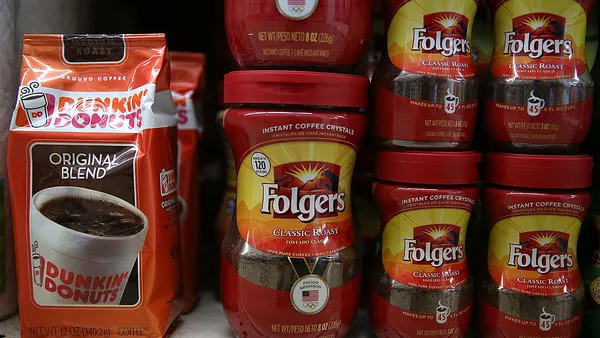The nutrition facts label on the back of U.S. foods and beverages has remained unchanged since 2003, when trans fats were added. Last week, the AP reported that the FDA sent a new set of proposed changes to the White House. The Internet — or at least the part of the Internet that reports on food — went completely bananas.
It's important to note, though, that we have almost no information about what those proposed changes may be. What we do have is a lot of speculation. It's sort of a Rorschach test that shows what food writers and activists’ wish lists for nutrition facts are. Michael Jacobson, the litigious food activist leader of the Center for Science in the Public Interest, thinks that measurements should be in teaspoons, because he apparently thinks that American consumers can accurately eyeball a teaspoon of sugar.
My sense is that the amounts don't matter too much as far as grams or teaspoons go. What's more important for the label is that someone be able to compare the number of sugars in one product to the number of sugars in another. The specific units used in nutrition facts are irrelevant.
Some suggestions are just silly, such as listing the amount of added sugars. The idea of added sugars is flawed, because there is some assumption that our body knows the difference between the naturally occurring sugar that comes from an ingredient and sugar we add to sweeten a product or to fuel fermentation.
There are some simple revisions that should be made, however. First, we need both a per serving and per container column across all products. We currently have this for 20oz bottles of pop, for example. Second, the FDA needs to specify acceptable serving sizes for different types of foods. That way, people can confidently compare the calories in a serving of Pringles to the calories in a serving of Lay's and know that the comparison is based on the same amount of product.
We also need to require a listing for potassium and phosphorous for people with renal disorders. These people have to be careful with how much potassium and phosphorous they ingest due to their medical conditions. Currently, neither potassium nor phosphorous is required on the label.
One last thing I would require is a listing for caffeine per serving and per container. In foods where caffeine occurs naturally — such as coffee, tea, or chocolate — caffeine goes unlisted in the ingredients because it isn't added. In products where caffeine is added, such as Mountain Dew or Monster Energy Drink, caffeine is listed in ingredients because it is added as an extra ingredient. Either way, we should have a line in the nutrition facts listing how much caffeine is in the product. Right now, caffeine is only listed when added and never listed in the nutrition facts, while potassium is usually only listed if it is in high quantities, like it is in orange juice and potato chips.
Of course, this is all speculation on my part and on the part of everyone else writing about food. Most likely, the FDA will make sure calories, protein, and carbs are most prominently listed, and they may do something on serving sizes, but everything else is just a part of our wish list.
If you would like to learn more about the nutrition facts label, the FDA has a great online educational resource to get you started here. The FDA will release the proposed changes after The White House has had a chance to review them, at which time, there will be a public comment period.
Sam Vance is a guest columnist for Food Dive. If you like his writing, you can get more Edible Intelligence at http://edibleintelligence.blogspot.com/ As always, you can find him @samvance on Twitter.
Would you like to see more food news like this in your inbox on a daily basis? Subscribe to our Food Dive email newsletter! You may also want to read Food Dive's look at 3 fronts in the ongoing yogurt wars.











